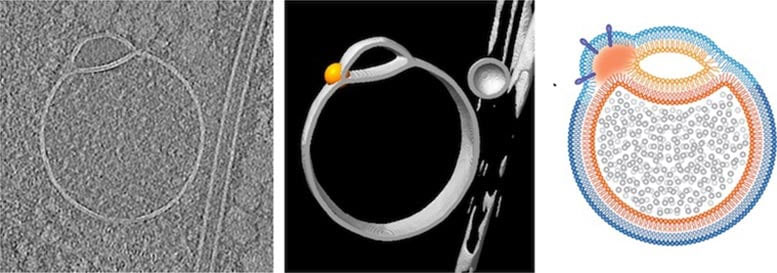Scientists discover a previously unknown organelle inside human cells
Scientists have identified a previously unknown organelle inside human cells, a discovery that could lead to new treatments for serious genetic diseases.
Organelles are the structural components that make up a cell. In cell biology, each cell is a building block of the body, so each organelle is considered a subunit. In other words, an organelle is a subcellular structure that has one or more specific jobs to perform within the cell, much like an organ in the body. Among the more important cell organelles are the nucleus, which stores genetic information; the mitochondria, which produce chemical energy; and the ribosomes, which assemble proteins.
The newly discovered structure, dubbed the 'hemifusome,' by a team at the University of Virginia School of Medicine and the National Institutes of Health (NIH), appears to play a key role in how cells sort, recycle, and dispose of intracellular 'packages.' Understanding how hemifusomes work could help shed light on genetic conditions that interfere with these cellular processes, the team says.
'This is like discovering a new recycling center inside the cell,' said Dr. Seham Ebrahim, a researcher in the Department of Molecular Biophysics and Biophysics at the University of Virginia. 'We think that hemifusomes help regulate how cells package and dispose of materials, and when this process goes wrong, it can contribute to diseases that affect multiple systems in the body.'
One disorder that involves such disruptions is Hermansky-Pudlak syndrome, a rare genetic condition that can cause albinism, impaired vision, respiratory problems, and difficulty clotting blood. Improper handling of cellular 'packages' is at the core of many similar disorders.
'We are just beginning to understand how this new organelle fits into the bigger picture of cellular health and disease,' said Dr Ebrahim. 'It's exciting because it's rare to find something truly new inside a cell – and it opens up a whole new avenue for us to explore.'

Dr. Ebrahim and colleagues at UVA Health collaborated with the National Institutes of Health to identify this new organelle. The hemifusome structure appears and disappears depending on the cell's needs. To observe it, the researchers used UVA's advanced capabilities in cryo-electron tomography (cryo-ET), a high-resolution imaging technique that captures cells in their near-natural state by "freezing" them in real time.
According to scientists, hemifusomes aid in the creation of vesicles – small, water-filled structures that act as intracellular mixing chambers – and also aid in the assembly of larger organelles made up of multiple vesicles. This system is essential for sorting cell contents, recycling materials, and removing waste.
You can think of vesicles as little delivery trucks inside the cell. Hemifusomes are like a loading dock where they connect and transfer 'packages'. This is a step in the process that we were completely unaware of before.
The goal for the future is to understand the importance of hemifusomes for normal cell function. Insights that could lead to effective targeted treatments for a range of serious genetic disorders.
You should read it
- The impact of mobile phone waves on human bodies
- How to use Focus Cell to highlight Excel data
- CELL function to look up information of a cell in Excel
- What is a laptop battery cell? Is it good to replace the battery cell and reuse it?
- If stretched all the way, how big are the human organs?
- Successfully created human kidney tissue from stem cells
 Things to do after 5pm to help you detox well the next morning
Things to do after 5pm to help you detox well the next morning The best ways to avoid getting sick when flying during the pandemic
The best ways to avoid getting sick when flying during the pandemic Dehydrating foods that not everyone knows
Dehydrating foods that not everyone knows Vegetables with more vitamin C than oranges
Vegetables with more vitamin C than oranges Why do weather changes give you headaches?
Why do weather changes give you headaches? The Amazing Health Benefits of Going to the Beach
The Amazing Health Benefits of Going to the Beach